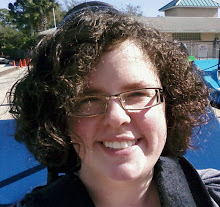675 BC
Institutions:
- Cities developing in the Near East build aqueducts to keep their residents supplied with water.
Technology:
- China's minister of agriculture teaches the peasants crop rotation. The minister also teaches
them to dig drainage ditches, rents them farm equipment, and stores grain surpluses to
provide free food in time of famine.
- Assyria's Sennacherib is assassinated after a 23-year reign in which he has diverted the waters
of a river into a huge aqueduct to supply Nineveh with irrigation.
Commerce:
- Phoenician colonists plant olive trees on the Iberian Peninsula.
Governance:
- Assyrians conquer Egypt.
- Legendary date for foundation of Japan by Emperor Jimmu.
- Greek colonization of the Mediterranean in the next 2 centuries will be motivated primarily
by a need to find new food sources as Greece's population expands. The barren and rocky soil
of the Greek peninsula is inadequate to meet the people's alimentary needs, but the Greeks
prefer to colonize than make efforts to conquer neighboring territories.
675 AD
Institutions:
- In Italy, The popes are great patrons of art and architecture and build or rebuild many
churches, particularly in Rome.
- Yakushi Temple is completed at Nara.
- Shinto Shrine of Ise first built in its current form in Japan.
- Dome of the Rock is completed by Caliph Abdel-Malik.
Technology:
- First Islamic coins minted in Damascus.
Governance:
- Expansion came in the form of colonization by the Greeks, mostly for agricultural purposes.
- In Italy, papacy gains increasing independence from Byzantium, acquiring sovereignty over
territories in much of central Italy, including Ravenna.
- Dodgeships in Venice.
- Umayyad forces forced to lift siege of Constantinople after decesive naval defeat at the battle
of Syllaeum.
Commerce:
- Taxing of certain goods, such as harvest, with an eye to allocating these taxes to expenditures
that are also explicitly defined, such as aid to the needy.
http://ehistory.osu.edu/osu/timeline/TimeLine.cfm?Era_id=4
http://www.metmuseum.org/toah/ht/06/eust/ht06eust.htm
http://ehistory.osu.edu/osu/timeline/timeline.cfm?Era_id=5
http://www.answers.com/topic/7th-century-bc
http://www.answers.com/topic/islamic-economics-in-the-world#Legal_institutions
Tuesday, January 27, 2009
View:Design::Tell:Story (Jan 21-28)

Artifact: According to Jules David Prown's books Mind and Matter and Style as Evidence an artifact corresponds to pattern in the mind of the producer and user and can be assessed by a three step process: description which includes a physical inventory and content analysis of form. Deduction is the link between material and the perceiver's world through sensory engagement, intellectual engagement, and emotional response. Speculation is the creative imaging in the eyes of the perceiver through hypothesis. (IAR 221)
Cycle: The design cycle is the direct reactions and resonances to preceding periods. The design cycle also includes regional influences and variations. Changes in clothing styles and music over the years can be part of the design cycle. The bell curve also characterizes the design cycle in one's life. Near the beginning of life design is growing and peaks near the middle of life, then begins to deteriorate reaching the end of life. (IAR 221)
 Multi-View: Vernacular views can be perceived in many different ways depending on the viewer. "Is it a bicycle shed or a cathedral?" A bicycle shed can be architectural as well as a cathedral. They both act as a covering for different reasons, one for a bike and the other for religionalIAR 221) We also learned that stories can be interpretted differently depending on the reader, such as the children's fairy tales read for class this week. (IAR 102)
Multi-View: Vernacular views can be perceived in many different ways depending on the viewer. "Is it a bicycle shed or a cathedral?" A bicycle shed can be architectural as well as a cathedral. They both act as a covering for different reasons, one for a bike and the other for religionalIAR 221) We also learned that stories can be interpretted differently depending on the reader, such as the children's fairy tales read for class this week. (IAR 102) Stories: Each student was assigned a different fairy tale to read, then create a page of notes and inspiration board depicting the story. Also, we were asked to draw five different things that are special to us individually. The drawings and short statements about them were to tell stories of the history of the items and ourselves personally. (IAR 102)
Stories: Each student was assigned a different fairy tale to read, then create a page of notes and inspiration board depicting the story. Also, we were asked to draw five different things that are special to us individually. The drawings and short statements about them were to tell stories of the history of the items and ourselves personally. (IAR 102)Translation: The fairy tales assigned could be translated in many different ways depending on the reader. Some students looked at the stories from a phsycological stand point while others looked at them from a child like perspective since many of the fairy tales were read as children. Many of the fairy tales were not appropriate for children even though they were meant to be read by children, but by older individuals can be translated differently. (IAR 102)
Synopsis: Artifacts, cycles, multi-views, stories, and translations all relate to one another through class discussions and assigned work throughout the week. All of the words connect in the way that the viewer or reader perceives the work. The viewer can translate the work in many different ways as well as see it in multiple views. Stories show different cycles in character's or artist's lives, and some can include artifacts like the favorite things drawings done in class to tell their stories. Architecture and history is made up of stories translated in different ways from multiple view-points that cycle from generation to generation and make memory artifacts that will be kept for time to come.
Subscribe to:
Posts (Atom)

